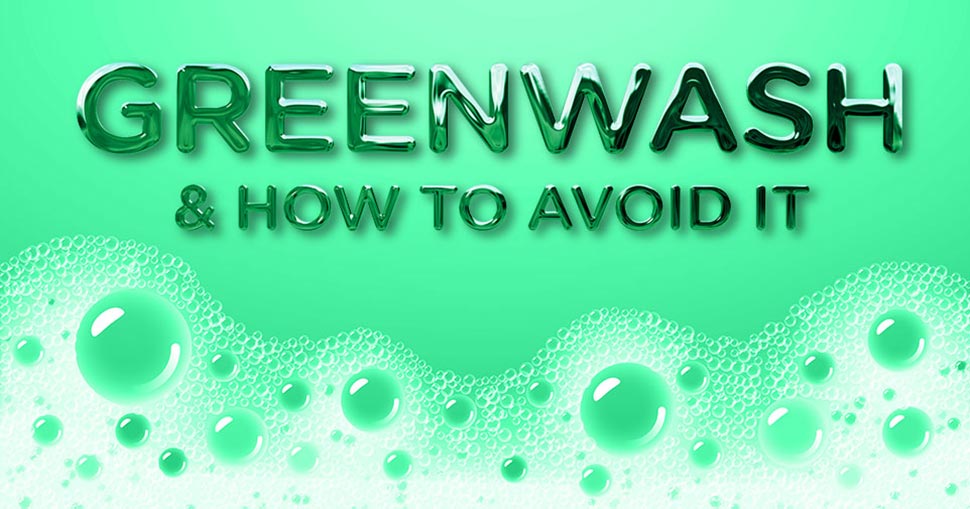Greta Thunberg famously called out the fashion industry for greenwashing and, looking closer to home, you’ll find the print industry is far from innocent. But what exactly is greenwashing and how do you avoid doing business with those that use it as a marketing tool?
Marc Burnett at Large Format Review takes a closer look:
Did you know the term ‘greenwashing’ was originally coined by environmental activist Jay Westerveld in the mid-1980s? The story goes thus: while staying at a hotel he saw a sticker on the wall asking guests to reuse towels to help “save the environment”. Having seen no other obvious signs of sustainable practise in any other part of the hotel’s operations, Westerveld quickly concluded the hotel’s aim was purely to save on laundry costs and it was cynically using the eco-friendly label to coerce hotel residents into compliance. He called this ‘greenwashing’, and so the term was born.
Here's a description of greenwashing in its simplest form:
- It is a marketing strategy that misleads consumers into believing that a company cares for the environment despite actions to the contrary.
- It serves primarily to win business from eco-conscious customers who want to buy ethically and sustainably.
- The Green £/$ they call it, and some suppliers want it whether they themselves are genuinely green or not.
What Impact is greenwashing having?
The primary problem with greenwashing is that it’s a marketing tool used to drive profit, rather than to take genuine environmental responsibility. With the climate crisis at the forefront of people’s thoughts, consumers are increasingly more cautious about buying into products or services that are not properly aligned with environmental interests, sustainability and ethical practices in general.
Greenwashing is essentially the exploitation of this process as companies prioritise the financial opportunities in appearing environmentally responsible without actively making the changes necessary to be eco-conscious. And, of course, they don’t acknowledge any of the damage that their cynical marketing choices make as that cynicism ripples across our industry.
How can you identify greenwashing?
Nobody likes to be duped into believing something that is misleading. More importantly, identifying greenwashing is vital in helping to eliminate the practise from our industry.
There’s lots you can do to avoid being greenwashed, and it is absolutely in your interests (and the environment’s, we’d hope) to do sufficient research. That is particularly the case if your own sustainable reputation is on the line when linked to your product and supplier choices.
Look deeper into sustainability claims and environmental credentials
If you see an advert or post that claims certain sustainable credentials, go to the company’s website and look for supporting information. If it is simply greenwashing as a marketing technique, you’ll typically find little in the way of supporting evidence. If doubt remains, talk to your contact at the business and dig deeper; ask them for the necessary evidence.
Look for third-party verification and certification
If a company is indeed doing as it claims, it will typically be verified by a third party. This means that the company should have received validation from one or more environmental auditing organisations, with their products and services certified accordingly.
Some of the most respected certifications include:
ISO 14001 – the established gold standard for companies that want to demonstrate that they are environmentally responsible, that an environmental management system is in place and that it’s being followed to certified standards. I’d predict more and more of the big brands will start insisting that their print service providers (PSPs) - and possibly their supply chains too - are ISO 14001 certified moving forward.
FSC – Forest Stewardship Council. The FSC’s chain of custody certification provides a credible assurance that paper-based products sold with FSC certification originate from well-managed forests, controlled sources, or reclaimed materials. We’d prefer it to be easier for suppliers to use though.
Beyond the above lies a plethora of Ecolabels; EPEAT is the leading global ecolabel covering technology products. i.e., your digital print hardware. UL ECOLOGO is a lifecycle-based certification that indicates compliance to stringent environmental performance standards. UL GREENGUARD for inks and emissions. OEKO-TEX for textiles. REACH for chemical health and safety… the list goes on and on.
As Steve Lister, Global Retail Sustainability Strategist and Head of Sustainability at POPAI UK & Ireland rightly says: “It’s so difficult as there are currently some 455 ecolabels in 199 countries across 25 industry sectors! Where do we even start?! For me I see ISO 14001 as being an important indicator that a company is making, or has made, a real commitment to sustainability.”
So, while Ecolabels are designed to help buyers to identify environmentally superior products and services, they are not all created equal. That’s where research is necessary. Thankfully, trade associations are increasingly committed to promoting planet-friendlier printing and are doing a lot of the heavy lifting for their members. For example, FESPA UK Association, British Print Industry Federation and POPAI UK & Ireland all have a wealth of useful information available to you, and all are actively encouraging PSPs and suppliers to sign up to their respective sustainable print initiatives.
What’s the industry saying and doing?
Arguably more important than the labels is the action being taken; one example is FESPA-UK which – alongside suppliers such as Soyang Europe and Prismm Environmental – is creating waste take-back schemes. In practise, this is where Soyang trucks – having completed a delivery of new materials to a customer – will then load the customer’s waste materials and ship them away for recycling or sustainably certified disposal.
The BPIF, alongside partners ArtSystems and Prismm Environmental again, are together coming up with similar real-world initiatives that deliver more tangible and effective POS recycling solutions to the print industry.
These types of initiatives are vital. As Andrew Wilson, MD at wide-format PSP PressOn says: “You can stick any label you like on a material, but it still ends up as someone else's rubbish eventually. Building credible disposal channels and then offering sustainable ways of disposing of print waste on behalf of our clients is where PressOn is focusing its efforts. Additional industry help would of course be appreciated.”
Nathan Swinson Bullough, MD at Imageco, agrees that more stringent industry accountability is coming. He says: “I have been in meetings with global retailers and it’s clear that the whole world of retail will be digging deeper and looking beyond us PSPs, so it’s becoming increasingly important that our supply chain does more and becomes more accountable.”
On the supply side we also spoke to Olivia Kelleher, WW Sustainability Lead for Large Format at HP. She adds: “For me it is more than collecting labels and certifications. I think you need to look past the badges and question what else that company or manufacturer is doing. Are they genuinely committed to sustainability? Look at it end to end and scrutinise how they might help you make a positive impact in your own business.
“Of course, it’s easier for global companies like HP with our resources, so there is an onus on HP to help our partners and customers in any practical way that we can.”
Olivia also agrees on the importance of fact checking: “You have to do your own research on suppliers claims. Associations like FESPA-UK, POPAI UK & Ireland and others are also there to offer great practical knowledge and advice.
“Most of all, trust your PSP peers that are already on the journey, because they are living and breathing this process of change and may have made many of the choices that you are currently considering.”
Indeed, HP is a manufacturer with a long-term stake in sustainability – the company virtually invented electronic recycling back in 1987 when it launched the HP Planet Partners return and recycling program for digital print consumables. To date, these initiatives have seen HP recycle almost 500,000 tonnes of hardware and print cartridges globally.
So, we’ll let Sustainability Strategist and Business Leader at HP, Thom Brown, conclude for us. He explains: “If you are avoiding greenwash, the key is absolutely to be informed. Pay close attention to the claims.
“And for yourself and your own journey towards more sustainable printing, I’d encourage participation in available programs and ensure your processes follow recommended guidelines to maintain high standards.”
Our own summary from the side-lines here at LFR? The reality is that some companies have a genuine stake in sustainability and want to help you, now more than ever, and they deserve your attention and possibly your patronage. Other less scrupulous sellers are simply bandwagon jumping to try and make a fast buck.
The bottom line is this: The only vote that works is made using your wallet when you decide which suppliers deserve your business. Do your research, reward integrity when possible, punish greenwash when it is obvious, and together our industry might get another step closer to where it needs to be: cleaner, greener, more ethical and with sustainable practises as the norm.






